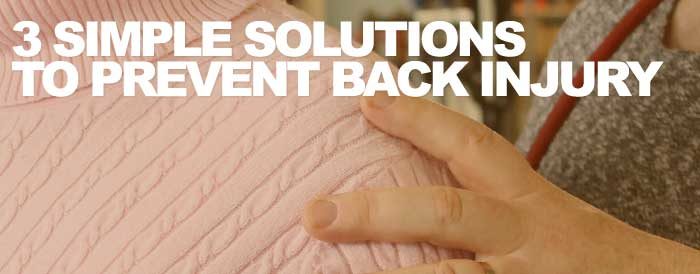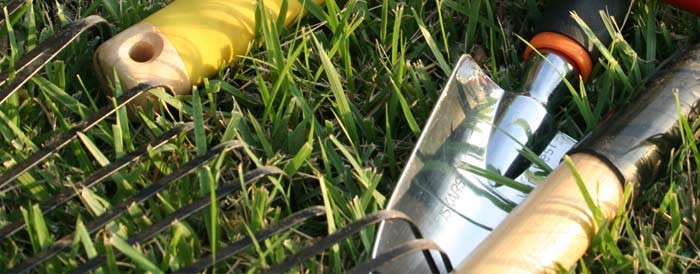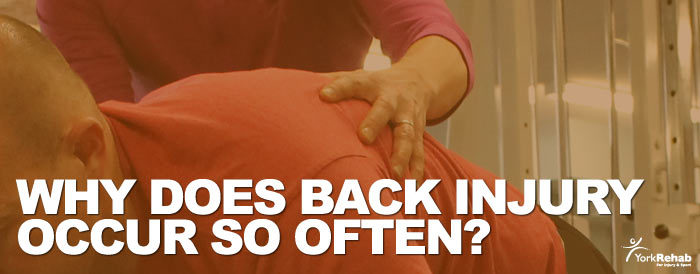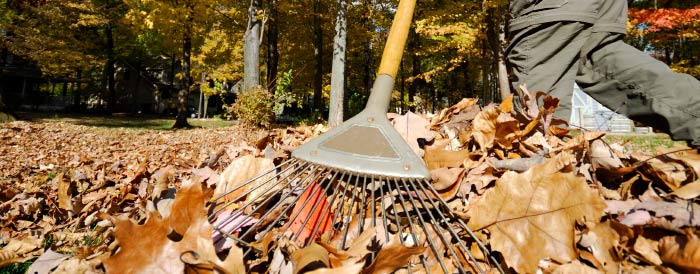Back Injury & Pain
The McKenzie Method – Mechanical Diagnosis & Therapy (MDT)
If you’ve ever had joint pain, this situation may be familiar to you: every family member, friend, and coworker has the time-honoured “magic solution” to get you better. Whether it’s heat, medication, meditation, or dousing yourself in honey, everyone has a suggestion. One you may have heard about is doing “McKenzie exercises” to recover. What are these exercises? Are they effective? How does it work?
“Mechanical Diagnosis & Therapy” or MDT
Also known as Mechanical Diagnosis & Therapy (MDT), the McKenzie Method is a comprehensive assessment system for orthopedic conditions such as back pain or shoulder pain, and is more than just a series of exercises. It allows the assessor to reliably classify you into different subgroups so that the right treatment can be applied. Practitioners need to understand you and your condition before they can hope to begin any treatment. It’s just like taking your car into the mechanic when something is malfunctioning – a good mechanic will take the time to ask you what the problem is (what are the symptoms?), and then will run tests to determine the source of the problem (does it hurt if you move that way?). You can’t expect the repairs to be made immediately – careful diagnosis is required first.
The McKenzie Method system was developed by New Zealand physiotherapist Robin McKenzie in the 1950s and 60s. One day he had a patient with back pain radiating down to his foot come in and he told him to go lie down on an unoccupied bed. Little did Robin know, the top half of the bed was at an angle, so the patient laid face-down on the bed with his back in maximum extension (like the cobra position in yoga). At the time the conventional wisdom was this was a terrible position for back pain. However, when Robin asked the patient how he was doing, he remarked that the leg pain had disappeared. This was so contrary to all his teachings that it inspired him to begin experimenting with different postures and movements and making careful observations with his patients. Patterns began to emerge, and he realized that these patterns could apply to all joints of the body.
McKenzie Method Today
Today the McKenzie Method is practiced globally by rehabilitation professionals of many backgrounds. Since its humble beginnings in New Zealand, it has been supported by numerous scientific publications around the world. Despite this, it is not a universally adopted system. Because the emphasis is first on understanding the problem at its root, which may take several sessions to achieve, it is at odds with the “treatment first” approach. Too often in rehabilitation the approach is to treat the symptoms with modalities such as heat or electrical stimulation, as opposed to getting an understanding of the cause. Fortunately, when the cause is identified using MDT, treatment can be very effective.
The majority of musculoskeletal problems are mechanical in nature – they are affected by movement. Mechanical problems require mechanical solutions, and often it is simply a matter of finding the right direction and force to move into. For example, a person with knee pain might respond to repeated knee straightening movements and have less pain and improved squatting mechanics as a result. If the right movement is applied regularly and aggravating factors are avoided, then rapid improvement is seen, often in a matter of days. Most people can treat themselves once they know what to do – patient independence is one of the central philosophies of MDT. This saves time and eliminates the need for long courses of treatment with many visits. Additionally, you will be shown how to prevent future episodes from occurring, and how to self-treat if the pain does happen to return.
So, the next time that shoulder starts to ache or your knee starts to lock up, instead of using the old family remedies, try looking up a certified McKenzie practitioner. The solution to your problem may be simpler than you think. York Rehab’s Newmarket Physiotherapy clinic has the most therapists certified in McKenzie treatment in Ontario.
3 Simple Solutions to Prevent Back Injury
Your back is a contributor to your strength, power and range of motion. Almost everything you do requires the use of this body part, which makes us all vulnerable to back injury. The best way to prevent a back injury is to develop habits that reduce the strain placed on the back.
Here are some things that put you at risk for back injury.
Problem #1: Poor Posture or prolonged bending
Our lifestyles promote inactivity and poor posture. Just look at people working at a computer. We tend to slouch and stay in this position for long periods. This can create strain on the neck, mid back and low back.
Solution: Get up and move! Every 60 minutes, unless you are driving, stop what you are doing. When sitting, ensure your tailbone touches the back of the chair. You can also use a roll to support your lower back when you have to sit for any length of time.
Problem #2: Poor Lifting Technique
Strong, healthy people can sustain a back injury if they lift a heavy object incorrectly. Familiarize yourself with the proper lifting technique.
Solution: Before you lift, engage your core. Keep the curve in the lower back. Bend your knees. Don’t bend at your waist. Keep the object as close to you as possible. Twisting and turning when lifting is a no-no. Change direction with your feet, not your waist.
Problem #3: Energizer Bunny Mentality
Jamming your weekend full of never ending activities like going for a long bike ride, back to back tennis matches, a round of golf and an afternoon of gardening, could set you up for back injury. When you sporadically put heavy demands on your body, it becomes incapable of handling the demands.
Solution: Be realistic and know your body’s limitations. If possible break up activities into smaller increments and spread them out over two or three days. When you finish your activity, do not slouch into a soft chair. Sit with good posture, using a roll in the small of the back or lie down.
At York Rehab clinic we regularly see patients with back and neck pain. It’s unfortunate because many of those injuries can be preventable. Prevention requires a change in our bad habits. Take care of your body. If you’re experiencing pain you may need an appointment with a physiotherapist. If you visit our Newmarket physio clinic, we can assess your injury and develop a treatment plan to help you eliminate your pain.
Gardening IS Exercise Too
Gardening is usually looked at as a task instead of actual exercise, and the thought of it being the kind of activity with risk of injury is often the furthest thing from our mind. But GARDENING IS EXERCISE and can pose significant risk of injury due to stress on your shoulders, arms, back, hips and knees. Muscles and joints are also susceptible to due to the repetitive strain and extended periods of fixed positioning (kneeling, bending, etc.).
There are a few things that you can do to protect yourself from injury and as you prepare for your next gardening project:
1. Don’t rush…spread out the work: instead of trying to cram everything into one weekend, take two or three weekends to work on your project. Unlike those “DIY” TV Shows that have teams in the background working to turn around a big project in a couple days…you don’t have that same support so don’t aim for an overnight transformation.
2. Warm up before activity: gentle stretches and movement mimicking the type of activity you’re about to perform is an excellent way of preparing your body for the upcoming work session.
3. Use the right tools: finding tools that are ergonomic can help to relieve some of the stress on joints and muscles. Look for tools that have padded handles and spring-action features (i.e. self opening sheers). Gardening gloves with a rubber grip are also recommended. Such gloves produce a better grip, allowing less effort when holding tools which reduces muscle strain.
4. Remember technique: don’t discount the benefits proper of technique…it can make a job much easier. When lifting heaving objects (flower pot, bags of soil, decorative stones, etc.), remember to lift with your legs (not your back). And when doing repetitive work like raking, remember to keep feet shoulder width apart, use your shoulders as much as possible(and minimize bending your back), switch leg and arm positions regularly and avoid twisting your body (reposition your feet in the direction you’re extending).
The whole idea behind a beautiful garden is that you get to spend time it – the last thing you want is to be stuck inside recovering from a preventable injury. So remember these points to keep away from injury. Happy gardening!
Why Does Back Injury Occur So Often
The vast majority of back injuries are accumulative in nature. What that means is that, on average, it takes 35 to 55 years of living before you accumulate enough wear and tear on the structures of the back that they begin to cause pain. The onset of pain can be quite variable. Often a person may notice only a bit of stiffness after prolonged sitting or bending, or mild discomfort after physical exertion such as snow shoveling. This can go on for years before anything more dramatic occurs. For others, the onset can be sudden and intense after a seemingly innocuous event such as sneezing or a bout of coughing.
Of course, back pain can also occur as the result of an injury where enough force is involved that the back structures sustain an acute injury. For example, a hyper-extension injury in soccer, falling off a horse or a car accident. In these circumstances, the back will progress through a healing cycle and repair the tissue. Depending on the severity of the injury, as with any structures of the body, you may be left with a “weak link” as the repair may not be perfect (eg. Ligaments maybe more lax post-injury which can affect the mechanics of the spine).
Obviously, these “weak links” will be more vulnerable to the usual stresses we place on the spine such as poor posture, inactive lifestyles etc. As a result, it is often noted that the pain from the original injury at some point did actually resolve but returned months or years later. This leads people to believe that the original injury never healed when in fact postural habits and time are catching up with them and “weak links” are going to feel the effects first.
With any injury it is helpful to receive some education on the healing process early on and instruction on what you can do to promote tissue repair to get the best outcome possible. Early intervention is the key.
Raking Time is Here…Avoid Back Injury
Fall is upon us and every year we see a large influx of patients with low back pain, usually occurring after raking up leaves. Here are a few simple steps that you can follow to protect your back from the likelihood of injury:
- Prepare for the task with some warming up – a 5 minute energetic walk will help your muscles to warm up.
- Keep An Eye on Your Posture – like any other activity form is important. Pain and strain is caused when your body is positioned awkwardly. To keep good posture, rake with your arms not your back, bend the knees slightly and take a break every 15 – 20 minutes and stretch by placing your hands on your waist and do a backbend that lasts about 4 seconds; repeat 5 times.
- Get The Right Rake – make sure the length suits your body size. You don’t want it too long or too short. And note that the wider the rake is the more weight you’ll be pulling so pay attention to what you’re about to pull.
- Hydrate – muscles require hydration to function best.
- Don’t Forget To Use Your Knees – keep your back straight and bend with your knees and hips when lifting. This reduces the strain on your back.
- It’s All About The Numbers – the more the merrier. Rake into several small piles so you’re not lifting too heavy a pile at once.
- Take a Break – there’s no need to get all your raking done in one shot. It’s a good idea if you have a lot of raking to do to break it up into multiple efforts.
We encourage you to get outside and be active but just be smart about it. Happy raking!






